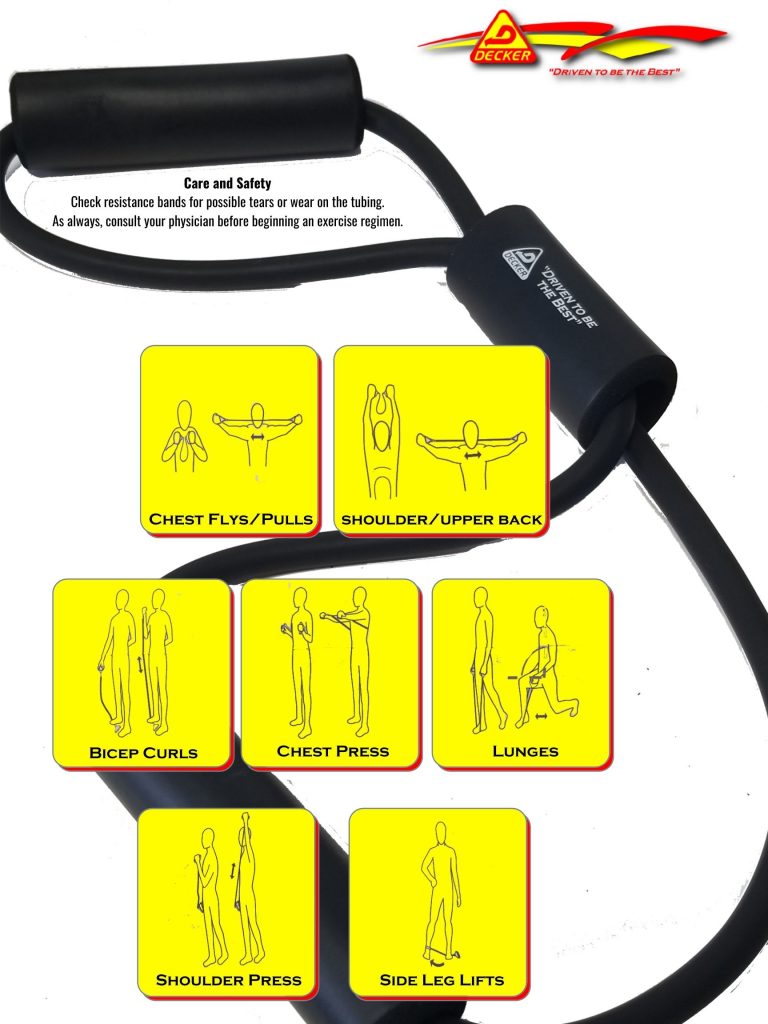Improve Health and Conditioning with Resistance Bands
One of the greatest advantages bands have over other dumbbells or other gym apparatuses is that they fit easily into small spaces, allowing you to continue your workout regimen on the road when you can’t get to a gym.
Resistance bands can be used for a variety of exercises that work most of the major muscle groups in your body.
The resistance bands have been used in physical therapy for many years and are also a great way to improve your health and conditioning.
While free weights are often seen as the best way to get stronger, using cables and resistance bands is a safer alternative that can help prevent injuries or pain. By changing the weight of a cable or band, you can still build muscle mass and reduce body fat percentage.
Tips for Bands and Cables
There are two kinds of resistance bands: tubes and looped bands. Both can be used to do the same exercises. The only thing that will change is the movement of the band itself, which implies an easier or harder exercise. Tube bands should be used for beginners who don’t have any previous experience with using resistance bands. Looped bands are suitable for users who have a higher level of fitness. What works great about those two kinds is that you can stack them on top of each other and they both attach to the cable machine, making it great for low impact exercises as well as high-intensity moves.
You can do the following exercises without any supplements or special equipment – just a little planning ahead. A resistance band only costs about $10, but it’s an investment that will pay off in improved strength and health. Decker Truck Line encourages healthy living and is now providing each professional driver here at Decker a resistance band to use for stretching, resistance training, and conditioning.

Health benefits of Resistance Exercise:
1) Increased immune system response.
2) Greater pain relief and reduced use of medication for chronic low back pain patients.
3) Increased cardiovascular capacity.
4) Stabilize post-surgery healing and reduce the need for reoperation.
5) Improved blood pressure control in prehypertensive and hypertensive.
6) Increased muscle strength and function in older adults.
7) Improve flexibility, range of motion, walking speed, and balance.
8) Reduced risk of falls by improving leg strength in older adults with osteoporosis.
Resistance Training effects on:
1) Muscle Increase- Muscle mass increased by nearly 10% in older women following a 12-week progressive resistance training program did not lead to loss of fat or bone mass.
2) Bone Mineral density- Resistance training increased bone mineral density in older women, an increase that was retained for at least 1 year.
3) Strength- 8-week resistance training increased lower body strength in healthy older men and women with low muscle strength.
4) Fat Loss- Resistance training reduces body fat in young overweight adults compared to aerobic exercise.
5) Metabolic Rate-Resistance training increases metabolic rate on average 24% for up to 3 days after resistance exercise.
Resources:
https://webcms.pima.gov/UserFiles/Servers/Server_6/File/Government/Human%20Resources/Wellness/Resistance-Band-Workout.pdf
https://msuextension.org/wellness/physical-activity/resistance_band.html
https://www.dps.texas.gov/sites/default/files/documents/etr/docs/exercisetubingworkout.pdf


 Decker Podcast
Decker Podcast





